This Roasted Cabbage with Gochujang Glaze recipe, seared in a cast iron skillet for those charred edges, roasted in the oven until tender, then brushed with a spicy glaze and broiled until caramelized will be the only way you will ever want to make and eat cabbage for the rest of your life. Shall we?
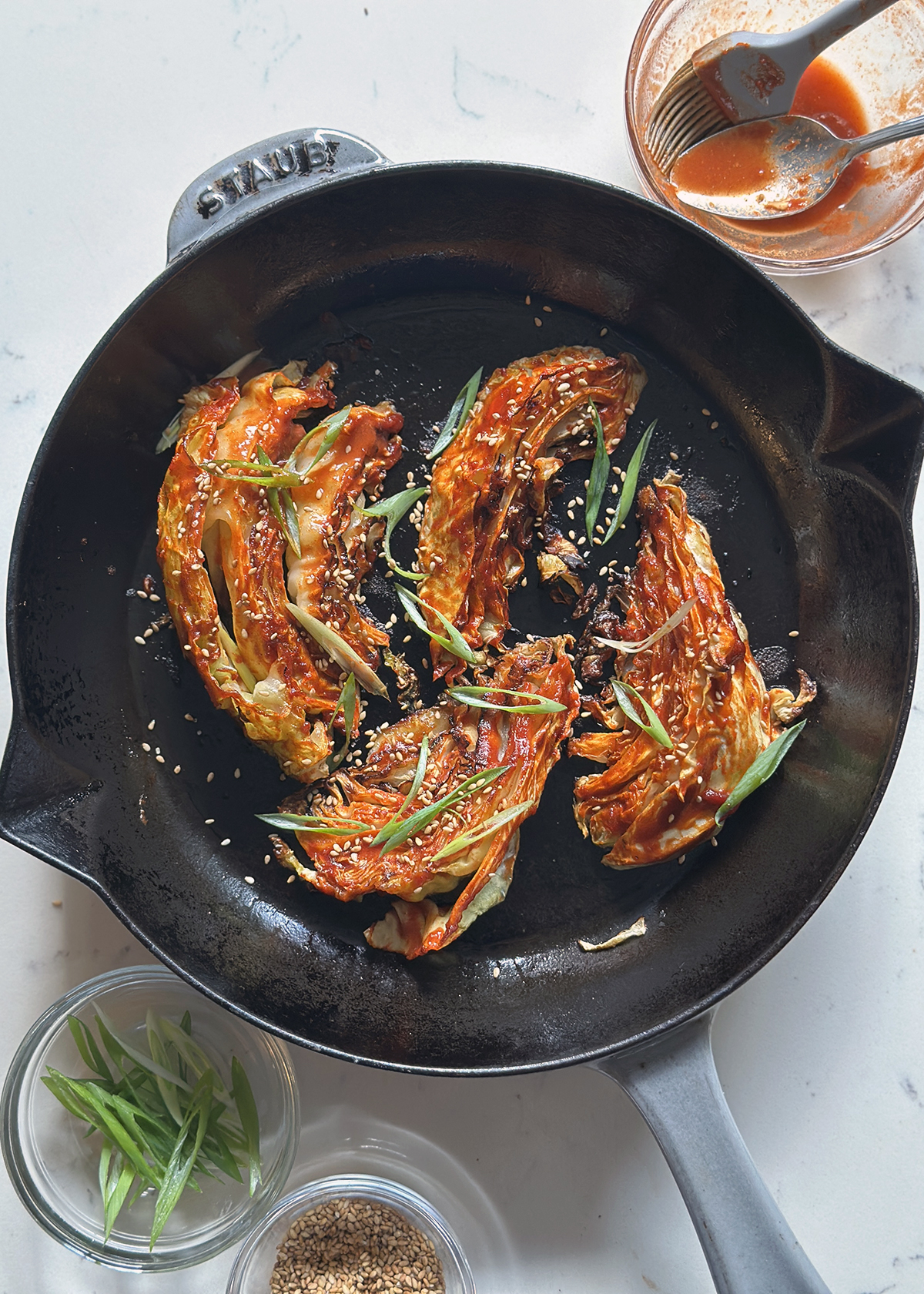
Explore More
- Roasted Cabbage with Gochujang Glaze
- Ingredients You Need for Roasted Cabbage with Gochujang Glaze
- What Kind of Cabbage Should I Use to Roast?
- How Many Pounds is a Head of Cabbage?
- What is the Best Gochujang to Use
- Instructions How to Make Roasted Cabbage with Gochujang Glaze
- Is Roasted Cabbage Healthy?
- Tools and Equipment
Roasted Cabbage with Gochujang Glaze
Ingredients
- 1 head cabbage
- 1 tablespoon avocado oil or other neutral oil for cooking
for Gochujang Glaze
- 2 tablespoons gochujang
- 1 tablespoon soy sauce
- 1 teaspoon toasted sesame oil
- 1 teaspoon apple cider vinegar
- 2 large garlic cloves finely minced
Garnishes
- 2 scallions sliced on the bias
- 2 tablespoons toasted sesame seeds
Instructions
- Heat oven to 425°F and line a baking sheet with parchment paper.
Cook Cabbage:
- Place carrots on baking sheet, drizzle with avocado oil, and toss until carrots are evenly coated. Shake baking sheet to make sure carrots are in a single layer.
- Roast carrots in oven until just tender, about 20 minutes. Give the carrots a stir halfway through the roasting time.
Make Gochujang Glaze:
- While the cabbage wedges are roasting, make the Gochujang Glaze. In a small bowl, whisk together the 2 tablespoons gochujang, 1 tablespoon soy sauce, 1 teaspoon sesame oil, 1 teaspoon apple cider vinegar, and minced garlic cloves.
- Remove baking sheet from oven. Brush Gochujang Glaze over cabbage.
- Return baking sheet to oven and roast for 10 minutes to caramelize the Gochujang Glaze.
- Remove cabbage to serving plate. Garnish with sliced scallions and toasted sesame seeds.
Nutrition
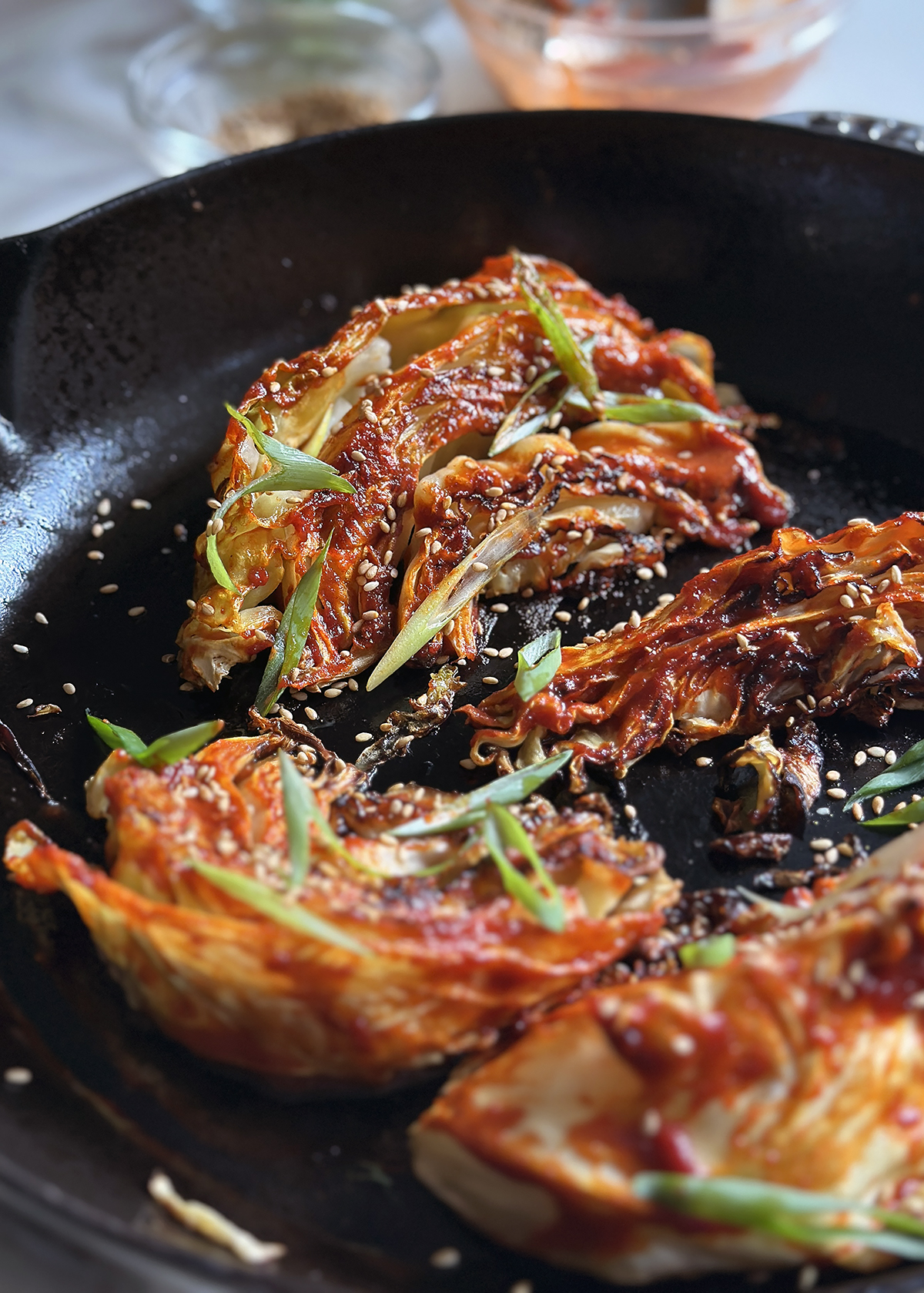
Ingredients You Need for Roasted Cabbage with Gochujang Glaze
You wouldn't think it, but cabbage is fairly sweet and flavorful on its own, so you only need a few ingredients to enhance their flavor. You will need::
- Cabbage, 1 head
- Avocado oil, about 2 tablespoons
for the Gochujang Glaze:
- Gochujang, 2 tablespoons
- Garlic, 2 cloves, finely minced
- Soy sauce/tamari, 1 tablespoon
- Apple cider vinegar, 1 teaspoon
- Maple syrup, 1 tablespoon
- Sesame oil, 1 teaspoon
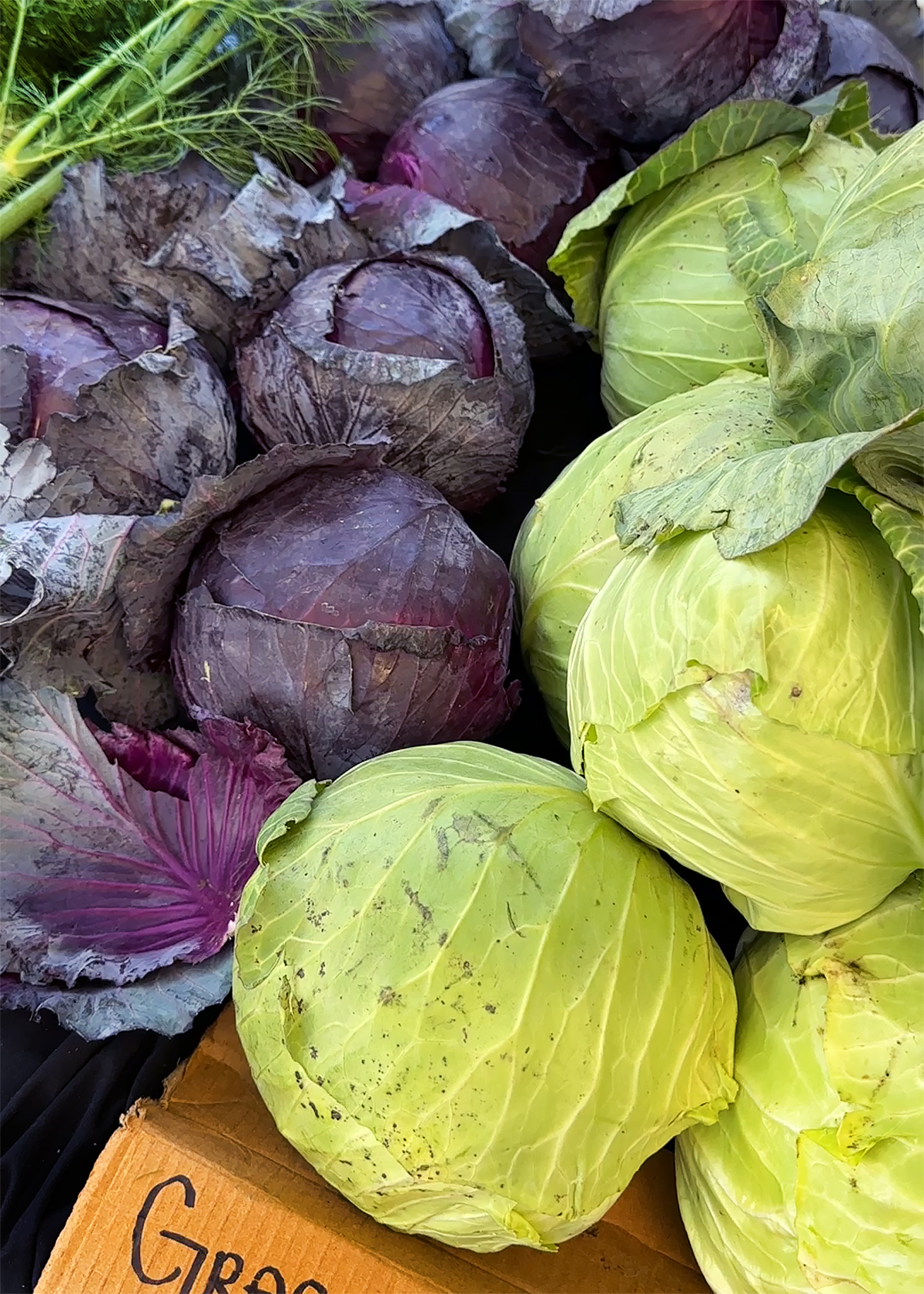
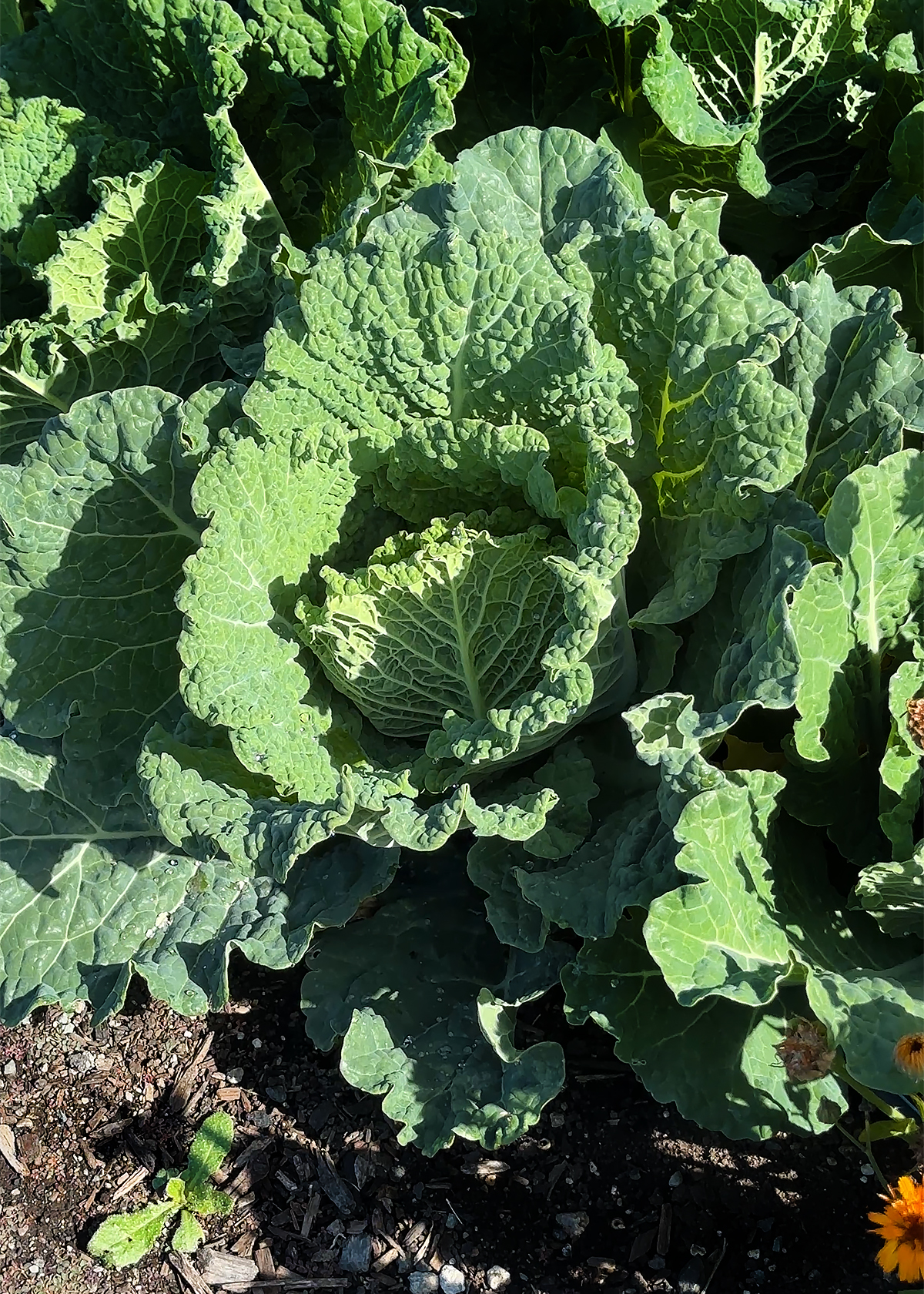
What Kind of Cabbage Should I Use to Roast?
Green cabbage, with the green, smooth leaves, is the one I use in this recipe.
However, any type of cabbage—ruffly savoy, purple, even napa—works for this recipe. The nutritional profiles across the types are generally fairly similar. Some varieties are milder in flavor than others, but in this recipe, the differences are not noticeable because of the flavors of the other ingredients, namely the dressing.
How Many Pounds is a Head of Cabbage?
Because cabbages come in different types, sizes, and density (how tightly packed the leaves are), it's better to "measure" cabbage by actual pounds, not by number of heads.
According to the USDA, an "average" cabbage weighs between 2 and 3 pounds, but what is this? The 1800s? Have you seen cabbages in grocery stores? They have gotten MUCH bigger, and the average green cabbage based on my own experience weighs more like 4-5 pounds.
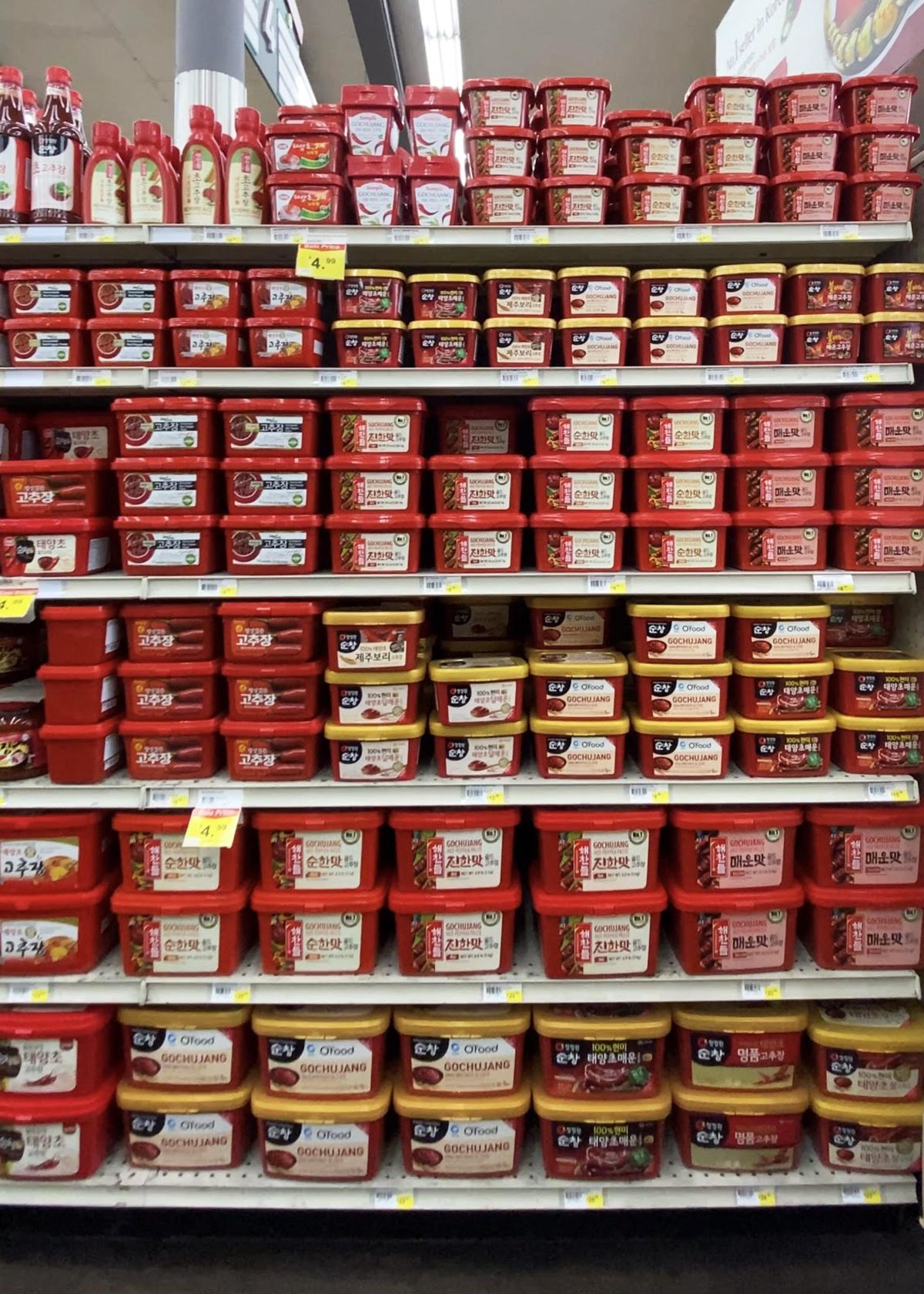
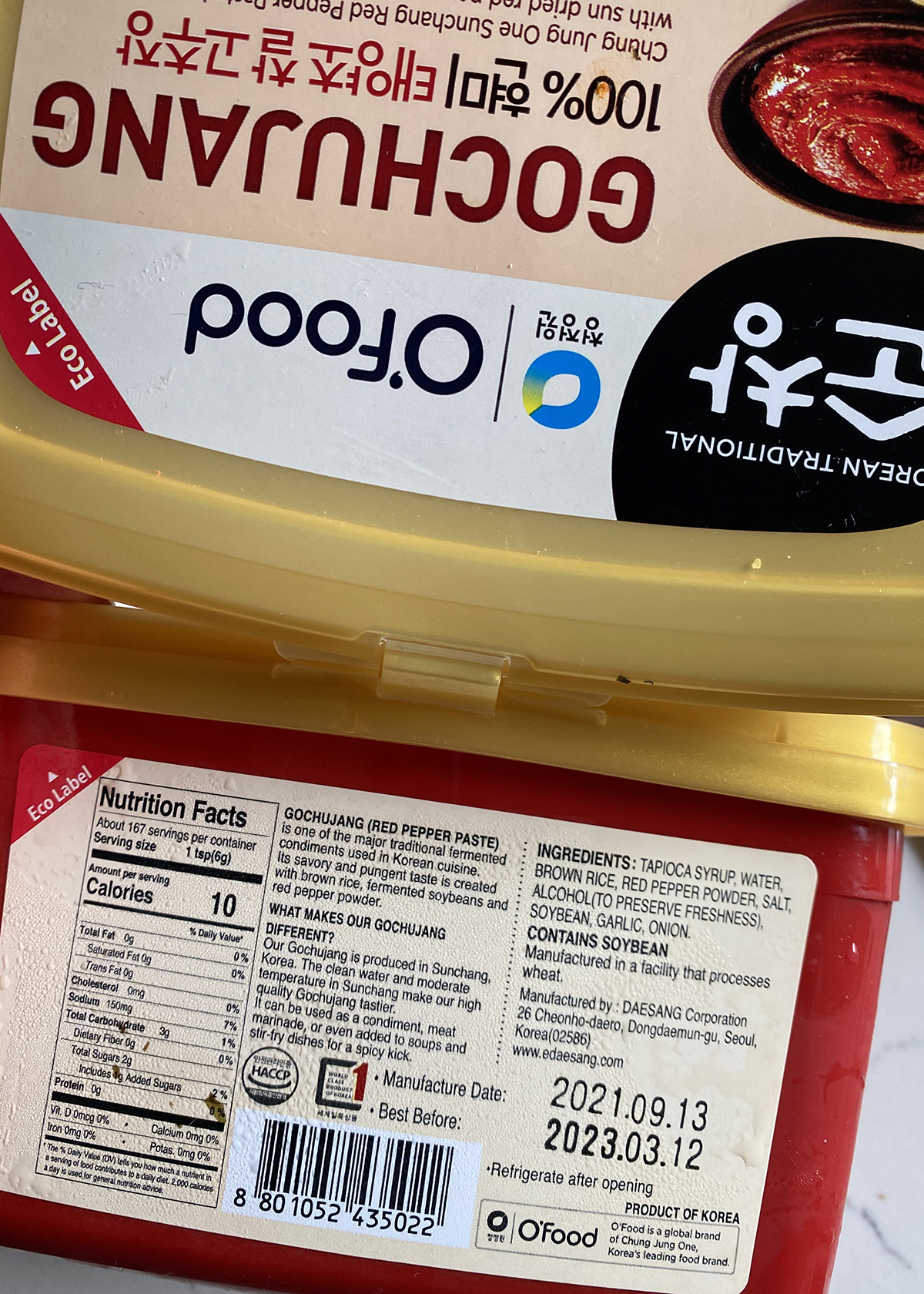
What is the Best Gochujang to Use
Gochujang is a Korean hot pepper paste made by fermenting chili peppers with rice and/soybeans. It has a deep-toned, savory umami flavor with a subtle background sweetness. Though sometimes literally called a "sauce," gochujang is actually more a starter ingredient used to make and flavor marinades, sauces, soups and more, and not something you would use directly out of the container at the table to season a final dish.
Like any condiment, gochujang varies in style, flavor, texture, and heat level across brands and recipes. Yes recipes! Because you can actually make your own gochujang. The base ingredients are Korean red pepper powder—called "gochugaru"—and soybeans. From there, ingredients vary, including any kind of sweetener from brown rice syrup (preferred) to high fructose corn syrup (avoid if possible!), seasonings like garlic and/or onion, sometimes grains like barley, rice or wheat, and possibly alcohol or other form of preservative.
For a full breakdown on gochujang, check out this post, Gochujang 101. In the mean time...
Which Type or Brand of Gochujang is Best?
There aren't necessarily different types of gochujang, though like any condiment, there are a range of spice levels, flavors, and textures based on different brands' exact ingredients.
Ingredients can include any kind of sweetener from brown rice syrup to high fructose corn syrup, seasonings like garlic and/or onion, sometimes grains like barley, rice or wheat, and possibly alcohol or other form of preservative. Read the labels to look out for any ingredients to which you are sensitive.
** Pro-tip: Make sure the product is "gochujang" and not "gochujang sauce," which is a pre-made sauce with gochujang as an ingredient.
Use any kind of gochujang that suits your taste and preferred heat-level. These are brands of gochujang I actually use and recommend, mostly because I look for products with no corn syrup and no wheat:
- O'Food Gochujang (pictured in all the photos on this post) is sweetened with tapioca syrup rather than corn syrup, and does not contain wheat in the ingredients, though the label indicates that it's made in a facility that also processes wheat
- O'Food Gluten Free Gochujang, same brand and ingredients as above, but specifically labeled gluten-free because it's made in a dedicated gluten-free facility
- Trader Joe's, surprisingly, has a good gochujang made in Korea and if you're new to gochujang, the container is small enough that you won't feel overwhelmed
- Mother in Law's Gochujang deserves a mention because I have tried it several times, it tastes great and most importantly it is available at many Whole Foods markets, which might be more accessible than a Korean grocery store. However, the ingredients do include wheat flour as well as malt syrup, which is made form barley (gluten).
How to Use a Tub of Gochujang
- Gochujang Salmon
- Spicy Bibimbap Sauce
- Roasted Honeynut Squash
- Dak Dori Tang, Korean Spicy Braised Chicken
Additional Ingredients Notes and Resources
Tamari or Soy Sauce. Tamari is a Japanese-style soy sauce that is brewed without wheat so it is gluten-free. This is the brand I use, which is also organic. You can use regular soy sauce.
Avocado Oil. I use this Avocado Oil as my every day neutral-flavored cooking oil. The oil comes in this spray bottle format, which makes even coating for roasting super easy.
Sesame Oil. Look for toasted sesame oil, which has a darker color and a deeper umami flavor. Sesame oil is a finishing oil, added to dishes just before serving for its flavor, rather than for cooking. This is a reliable Japanese brand that I've been using since I was a kid. There are now many brands of toasted sesame seed oil available, even organic version, at regular grocery stores.
Apple Cider Vinegar. Any brand of apple cider vinegar "ACV" works as long as it has the "mother," i.e. the little cloud floating inside. The mother is what causes the fermentation and is partially what makes this salad good for the gut. This generic store brand of organic Apple Cider Vinegar is generally the most affordable where I shop. This is the well-known apple cider vinegar brand that's available everywhere.
Maple Syrup. Most gochujang already contains some form of sweetness—anything from brown rice syrup and tapioca syrup to high fructose corn syrup. Read the label of your gochujang, then add sweetener to the marinade recipe based on your taste. I prefer the sweetness of natural maple syrup to refined sugars, and use a very little amount. I use an organic maple syrup like this.
Garlic and all other herbs and produce I get from the Santa Monica Farmers Market on Wednesdays or Mar Vista Farmers Market on Sundays.

Instructions How to Make Roasted Cabbage with Gochujang Glaze
This method for roasting cabbage is easy! If you haven't already, remove any bruised or wilted outer leaves, and slice off the dried end of the core. Cut the cabbage in half lengthwise through the core, then cut each half into 3 or 4 wedges that are about 3 inches on the wider side.

Pan-sear and roast cabbage first first:
- Heat oven to 425°F.
- On the stovetop, heat a cast iron skillet or heavy bottom, oven-safe pan over high heat.
- Add about 2 tablespoons avocado or other high-heat cooking oil and let heat until it starts to shimmer.
- Carefully place cabbage wedges, a cut side down, in the pan. Cook cabbage until well charred, about 7 minutes. Turn cabbages over, then transfer the entire skillet to the oven.
- Continue roasting the cabbage until the second side is charred and the interior is tender, about 15 minutes.
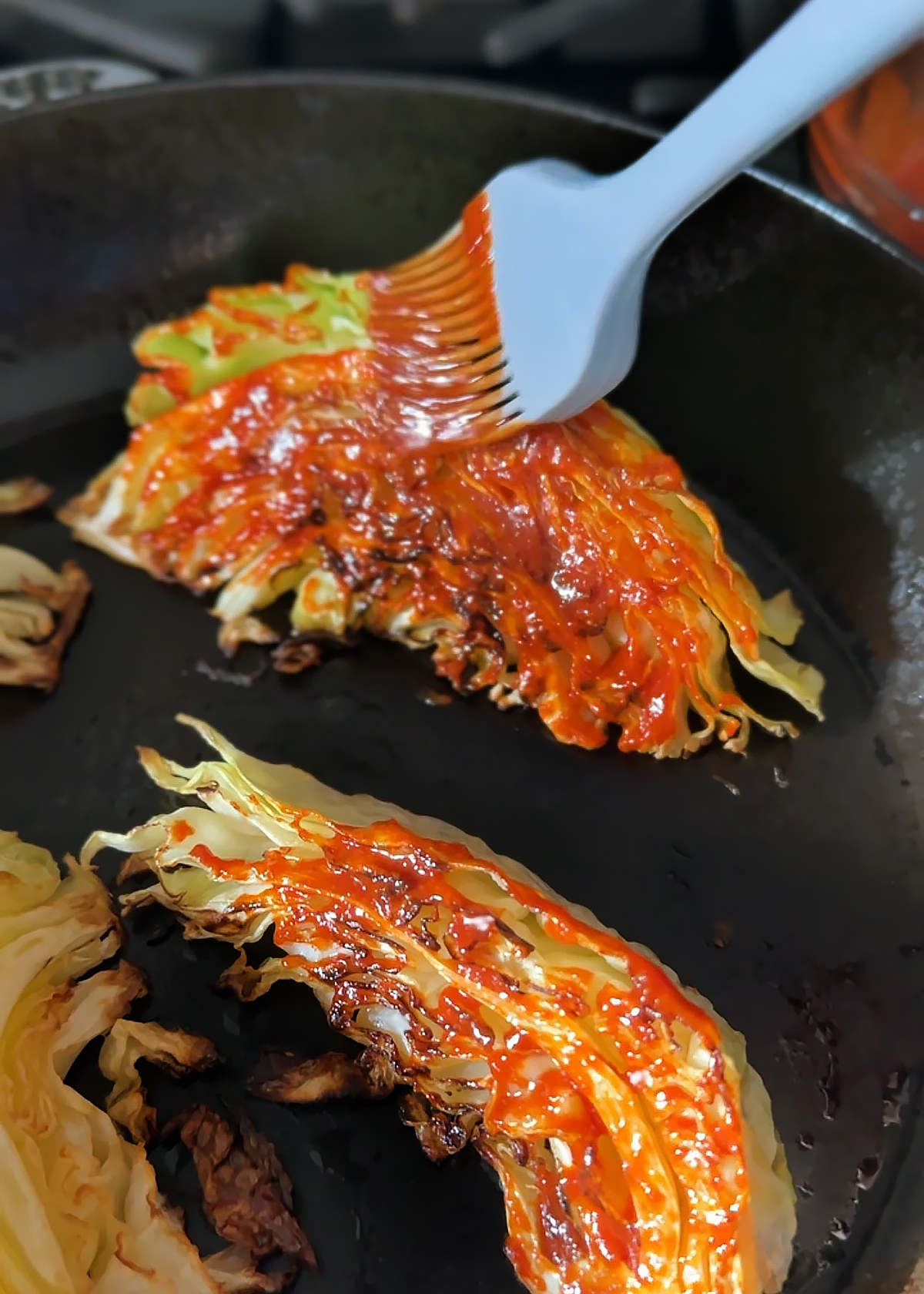
While the cabbage is roasting in the oven, make the Gochujang Glaze.:
- In a small bowl, whisk together the 2 tablespoons gochujang, 1 tablespoon soy sauce, 1 teaspoon sesame oil, 1 teaspoon apple cider vinegar, and minced garlic cloves.
- Remove skillet from oven—make sure to use oven mitts! Brush Gochujang Glaze over cabbage.
- Return skillet to oven and roast for 5 minutes to caramelize the Gochujang Glaze.
- Remove Roasted Cabbage wedges to serving plate. Garnish with sliced scallions and toasted sesame seeds.
Is Roasted Cabbage Healthy?
Depending on your health needs and dietary considerations, Roasted Cabbage with Gochujang Glaze is healthy! To be honest, I can't really think of a case in which Roasted Cabbage with Gochujang Glaze would not be healthy, unless maybe spice from the gochujang causes heartburn or the high fiber content of the cabbage causes other gastric issue for you.
Let's break down some of the nutritional highlights, starting with the most underrated nutrition hero, cabbage. Cabbage is a non-starchy vegetable that not only add subtle, natural sweetness to a dish, but is especially good for the body in the fall and winter months when other colorful vegetables seem to be in shorter supply. Cabbage provides a number of nutritional benefits like:
- fiber, which contributes to good gut health, decreases cholesterol, and lowers blood sugar
- surprisingly, vitamin C
- additional antioxidants, primarily in the form of anthocyanins in purple/red cabbage
- glucosinolates and suforaphane with have strong anti-cancer and liver detox properties
(source: USDA)
Gochujang Has Probiotic-like Qualities. Gochujang is made by fermenting chili peppers with rice and/or soybeans. As a fermented food, gochujang provides gut-health promoting probiotic bacteria. That fermentation gives gochujang its umami flavor, that salty, savory deliciousness that's hard to pinpoint in foods.
Dietary Considerations of Roasted Cabbage with Gochujang Glaze
This Roasted Cabbage with Gochujang Glaze recipe as presented is:
- 100% plant-based, suitable for vegan lifestyles
- vegetarian
- low calorie, low fat
- gluten-free (using tamari instead of soy sauce)
- dairy-free
- refined sugar-free
Tools and Equipment
As I always say, you don't need any special equipment to make almost any recipe. However, that's not to say there are a couple of gadgets and tools that might make it a LOT easier to get Roasted cabbage with Gochujang Glaze from your fridge to fork.
- Vegetable wash
- Chef's knife
- Small paring knife
- rimmed baking sheets
- parchment paper
- Silicone brush
- Mini ¼-cup liquid measuring cup
- Glass mixing bowls for making marinade
- Mini whisk
- Glass storage container with airtight lids
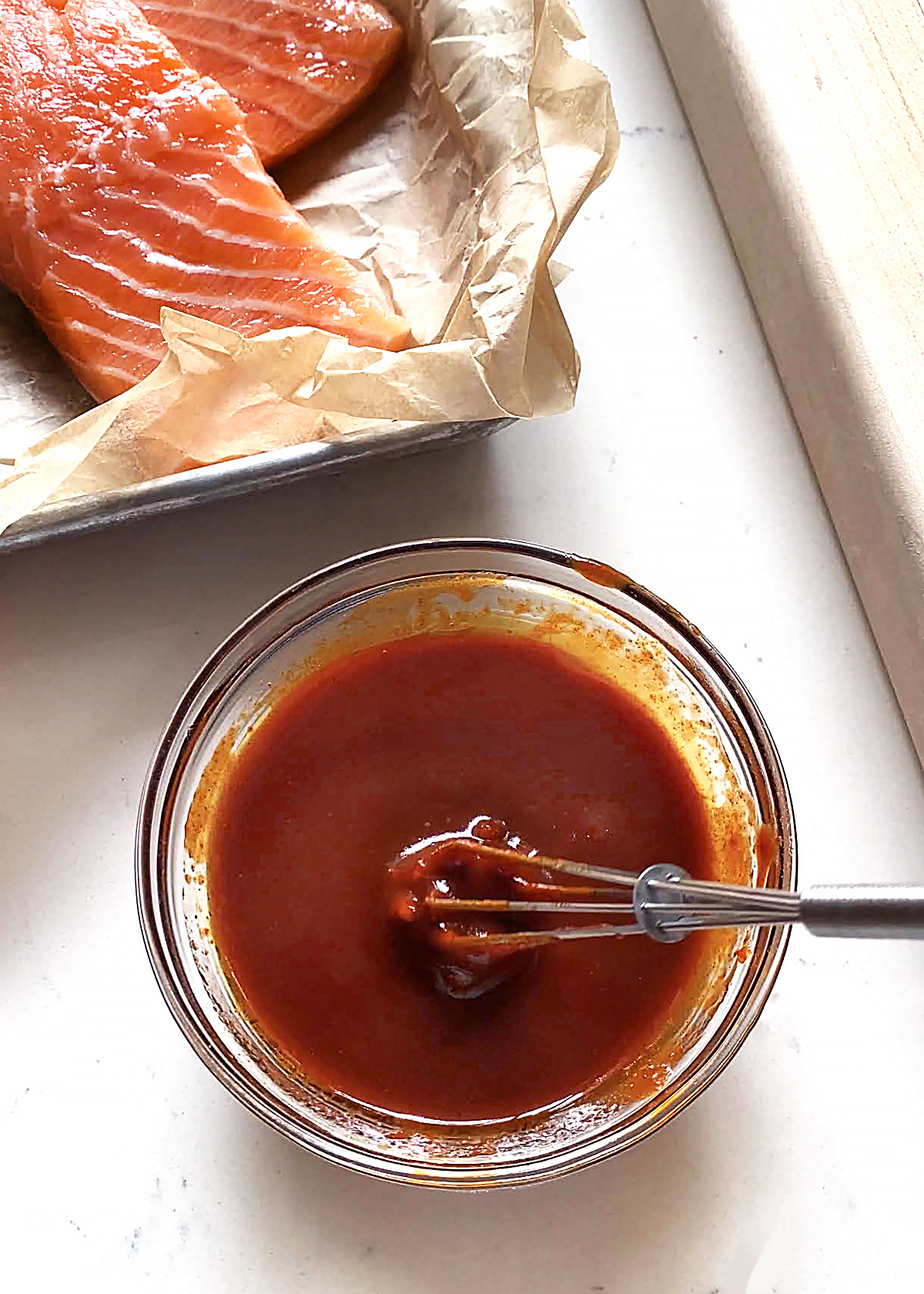
Pro Tips, Tricks, and Techniques
Double, triple, or even quadruple the glaze. The amount of ingredients for the spicy sauce make about ⅓ cup, which fits this specific recipe for Gochujang Roasted Carrots. But I highly recommend scaling up to make triple the amount of the glaze to save and use for other recipes like Gochujang Roasted Carrots, Butternut Squash and even Gochujang Salmon! Use the amount you need for the cabbage, then store the rest in an airtight glass jar in the refrigerator. The sauce is great as an all-purpose spicy dressing over greens, grains, or even dip for fresh vegetables! Add some chopped scallions for some color and an extra layer of flavor.
Variety of cabbages make it fun. If you want to add some more color to your dinner table, use different cabbages. Different colored cabbages do taste different from one another, but the difference is so subtle, you'd probably only be able to tell the difference if you tasted them totally raw side-by-side, and that's if you had a pretty sensitive palate. The different colors also have different antioxidant profiles, since different antioxidants render different pigment colors in vegetables!
Make double the amount of Cabbage. Cabbage are a sturdy, reliable vegetable, which means they hold up really well in the refrigerator for a few days as leftovers or even as Meal Prep. You can roast more carrots and keep the Gochujang Glaze separate to add when you re-heat, or just store the cabbage already glazed.
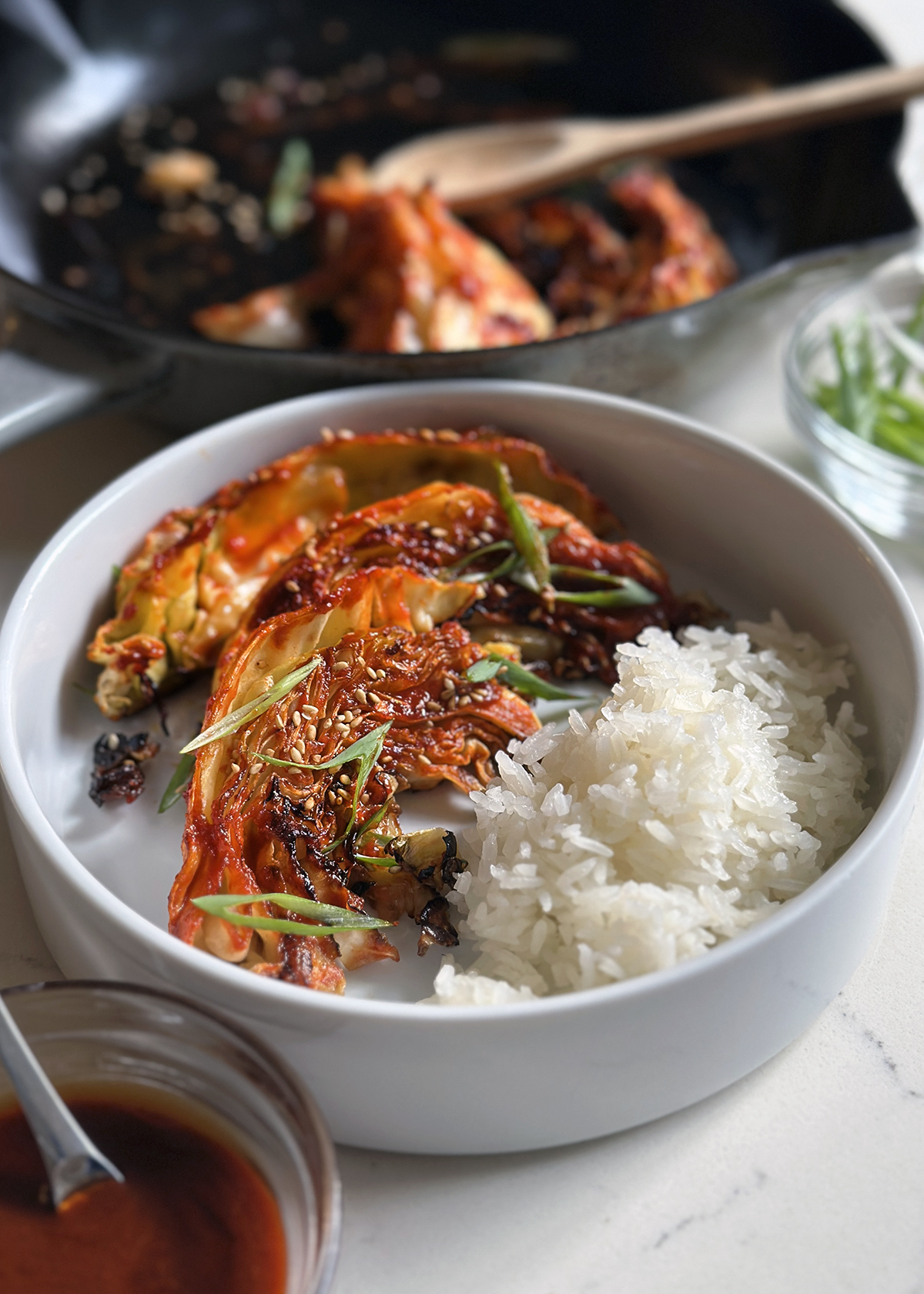
What Else to Serve with Roasted Cabbage with Gochujang Glaze
Paired with a bowl of steamed rice or quinoa, this Roasted Cabbage with Gochujang Glaze can be a perfect, light vegetarian meal. However, if you'd like to add some protein, more color, or make the cabbage a full side dish to a larger main dish, here are some ideas for what else to serve with Roasted Cabbage with Gochujang Glaze:
- serve alongside Miso Salmon
- Gochujang Salmon
- Nobu's Miso Marinated Cod
- Roasted Ginger Tofu for a vegetarian meal
Best Cabbage Recipes
- Cabbage Apple Salad with Miso Mustard Dressing
- Houston's Emerald Kale Salad with Cabbage
- Cabbage Slaw for Fish Tacos
- Easy Homemade Kimchi (Napa Cabbage)
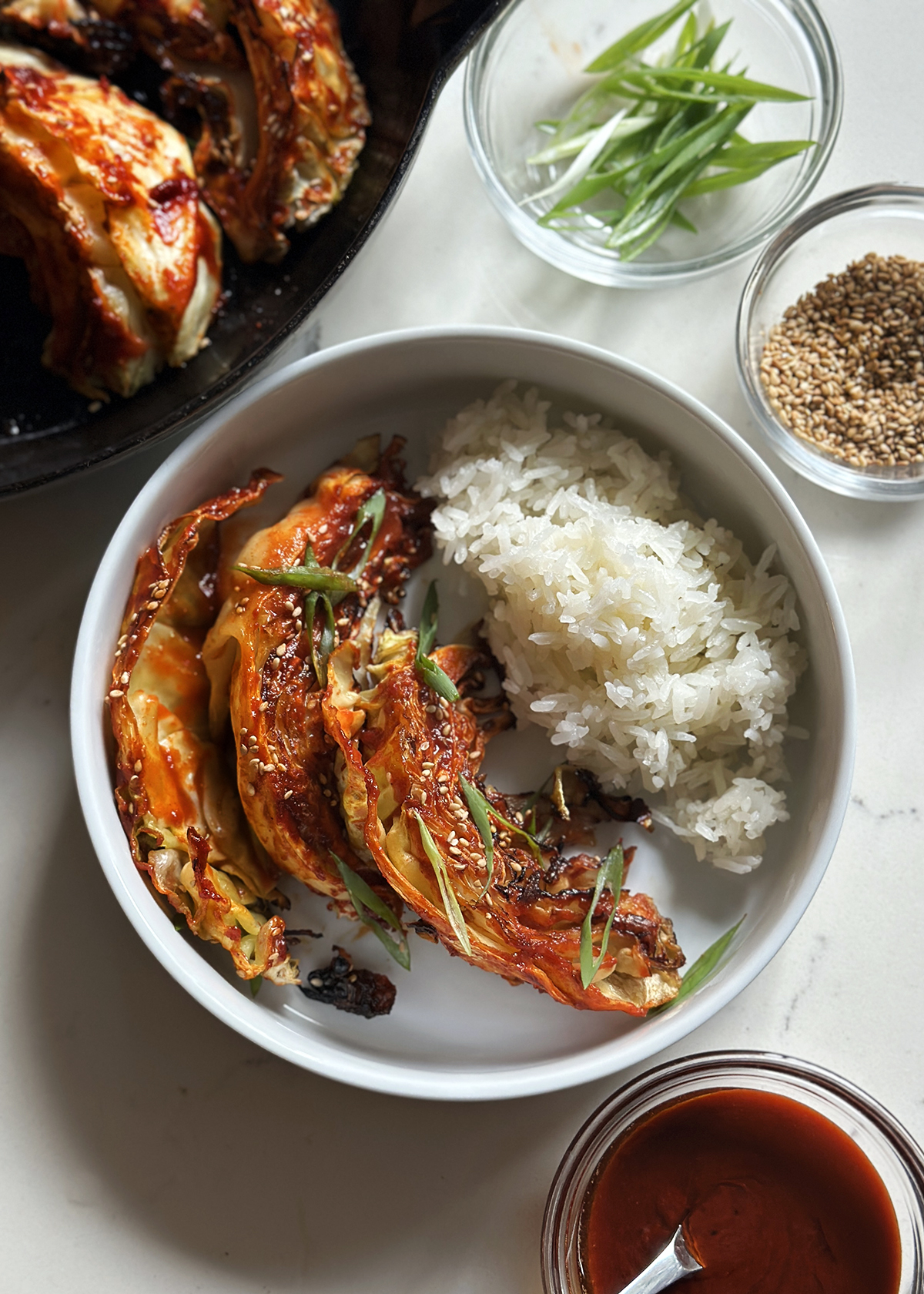
Food for Afterthoughts
After a relationship ends, whether it ends maturely with a hug and wishes of good luck, or whether a girl feeds all his J. Crew work shirts through an industrial paper shredder and FedExes them to his office COD (that wasn’t me, I swear - that was some other psycho-beeyotch ex-girfriend of yours, and besides, I'd do something much more creatively cruel) a girl might say that what it all boils down to is that the guy is afraid of commitment.
Hmm. Afraid of commitment? Please. That is an excuse. It’s a feeble attempt at an explanation as to why the relationship's end is his faulty fear of commitment and not her faulty fact that she is too clingy and let herself get fat and ugly while unemployed. It is an excuse to cover up and make yourself better, not an explanation, for why he plainly, simply, dumped your ever-spreading, ever-blogging ass.
He’s not afraid to commit, dear. He just doesn’t want to commit. To you.
*ouch*
The C Word
Either way, it’s about commitment, and the C-word is a scary thing. I'm certainly not afraid of commitment. I just don’t like commitment. There is a difference. I don’t want to be tied down like that. I don’t want to be stuck doing, seeing, saying, and hearing the same thing every day and every night. I’m still (relatively) young. I’m still exploring. I want the freedom to be able to grab my keys and wallet (but not my cell phone) and go out whenever and wherever I want to; I don’t to feel obligated to “check in”; I don’t want the burden of someone else’s worry when I’m wild-childing out on the town!
Ooooh. Kaaay. That is not me. I am not a spontaneous, whimsical girl.
But I still want that freedom to do it, if I ever did get up off my lazy butt. :)
Waste Not
I was standing in the produce department shivering a little every time the tiny misters spritzed the vegetables with a glossy sheen. The misters were hidden under the shelving and blinked out a spray quickly, quietly, hoping you might not notice that the vegetables’ outward image of natural, sparkling beauty was really just make-up. Facing off with the cruciferous section, I could not commit.
The cabbage was there, robust, tight, heavy. I wanted it, but it was an entire head. For a girl like me, without a family of five screaming kids who would polish off a cabbage casserole drowning in cheese in one night, or a planned dinner party with a dining room full of guests who would nibble on cabbage salad, an entire head of cabbage is commitment. Day in. Day out. I’d have to eat cabbage at every meal if I buy a whole head.
Maybe at one time in my prodigal youth I would have plunged into a whole head of cabbage with reckless abandon, knowing full well that it might not, likely would not, go beyond one night. I’d peel off a few leaves to shred into a salad, then toss the rest to the wayside without a second thought.
Such waste was okay back then, but it’s not like that anymore. I can’t afford it. If I get home and I find out I picked a bad one, I have to live with my bad choice. If tomorrow night I want carrots, I have to want them on the inside, but on the outside, I’d have to eat the cabbage. I wasn’t sure I wanted to take such a huge, responsible step in the direction of maturity. Buying a whole head of cabbage is commitment, and commitment itself is a risk.
Take the Plunge
I bought the cauliflower at $2.99 a pound. For some reason, that $7 seemed like a very expensive commitment.
The way to make it work, that is, the way to make it not seem so boring day after day, is to get creative. Yes, it requires work, but no one ever said commitment was easy, either. One night, it’s the usual – a Cabbage Apple Salad that allows the true, pure flavor of cabbage to come through. The next night, it gets changed up a lot with something new and exotic – a dark, deliciously sweet and caramelized cabbage stir-fry.
The third time, I made Roasted Cabbage, also a first for me. I even went so far as to brush it with a sweet and sticky gochujang glaze. I loved every caramelized, charred bite, all the way down to the very last scrape of the extra glaze with a rogue leaf at the bottom of the bowl with rice. And I would have licked up every drop right there alone in my kitchen if it weren’t for the bowl being so narrow and deep.
As I gazed down into the empty bowl, I realized commitment wasn’t so bad. It’s not that I didn’t ever like it. I just hadn’t ever had a reason to commit until then. Cabbage is a very good reason.

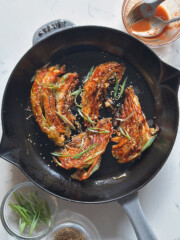
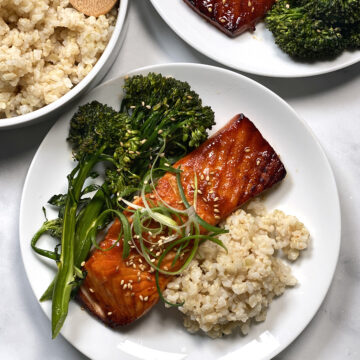
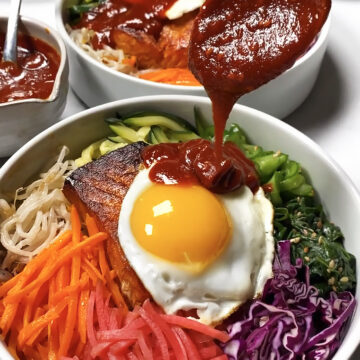
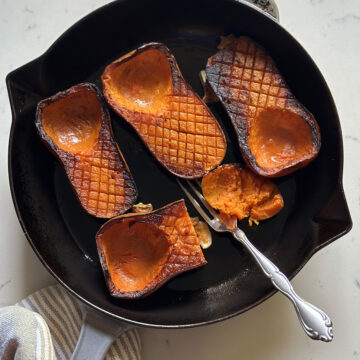
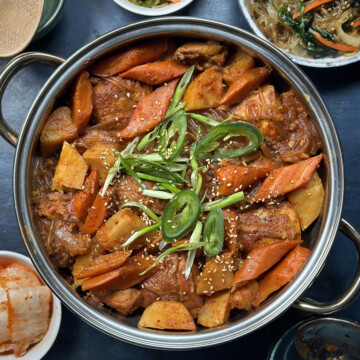

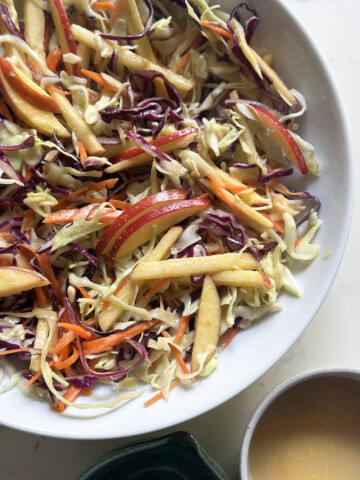
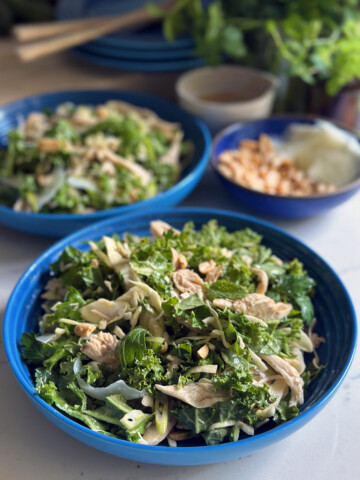
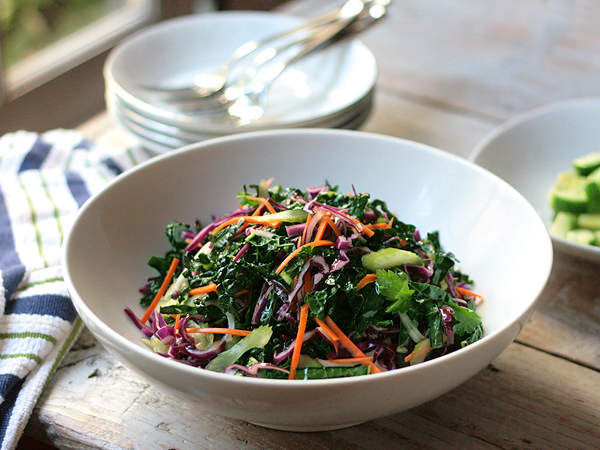
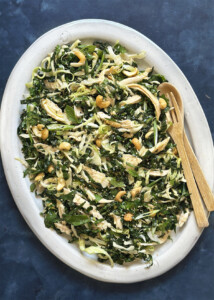
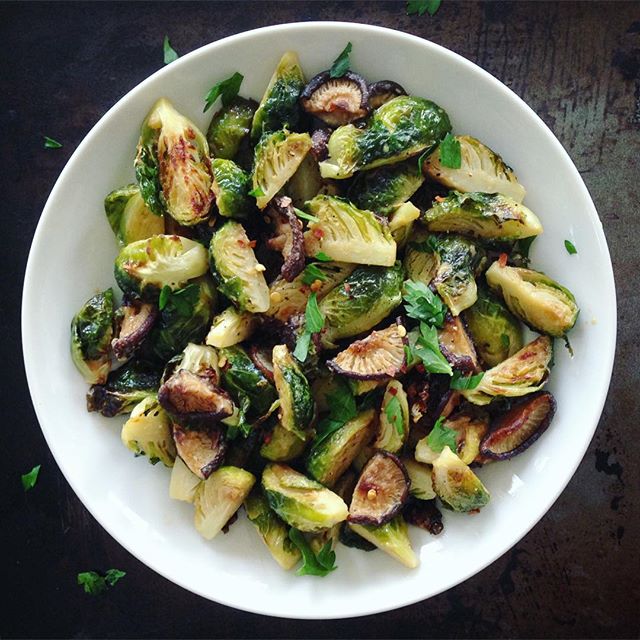
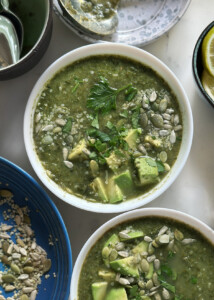
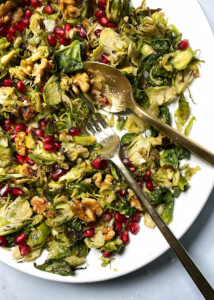
Catherine says
hahaha! @ the "ever-spreading" ass comment. i don't care what you actually meant by it, but it was pretty f'n funny as is.
OK, back to the rest of your post...
ps: all I have to say is, if a girl's spreading her ass, a man's crazy not to commit. LOL!
FooDcrazEE says
"ps: all I have to say is, if a girl's spreading her ass, a man's crazy not to commit. LOL!"
Wow ! what a comment CAT
sarah says
i, uh, i..i cannot formulate a response.
i am laughing. and crying. LOL!
MacroGal says
Did you add cream or half-and-half to the bowl you took the picture of? It looks AMAZING (but would be so much more virtuous without the cream)...
MacroGal says
Did you add cream or half-and-half to the bowl you took the picture of? It looks AMAZING (but would be so much more virtuous without the cream)...